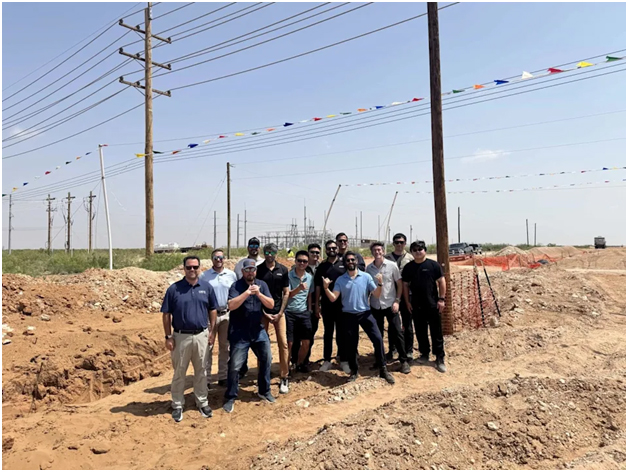Innovative Solar-Powered Bitcoin Mining Project Takes Shape in West Texas
Sangha Renewables is making strides with its latest venture, launching a new bitcoin mining operation powered entirely by solar energy in West Texas. The facility, designed to handle 19.9 megawatts of power, will tap directly into an existing large-scale solar farm. This arrangement allows the mining operation to use clean energy without relying on the traditional electricity grid, making it more cost-effective and environmentally friendly.
This project is a pilot, intended to demonstrate that Sangha’s novel approach to combining renewable energy and bitcoin mining can be profitable and scalable. If successful, it could pave the way for more such installations across the United States, transforming unused renewable energy assets into lucrative bitcoin mining hubs.
Spencer Marr, co-founder and CEO of Sangha, explained that they’re building more than just bitcoin mining sites—they’re creating a whole new system that changes the way money moves in and out of bitcoin. He said:
“Sangha is not just building bitcoin mining sites—we’re building a new model for how capital flows in and out of bitcoin”

Image 1: Sangha (Source: PR Newswire)
Funding and Partnerships Drive Progress
To bring this project to life, Sangha has been raising capital through equity, securing $14 million out of a $17 million target so far. The funds will primarily be used to build the mining infrastructure and support the company’s plans for expansion. This strong financial backing reflects growing confidence from investors in Sangha’s business model.
A key component of this operation is the partnership with a well-established solar energy producer. Sangha has leased a portion of land on the solar site to house its mining equipment. This partnership benefits the solar company by generating additional revenue without incurring extra costs or operational responsibilities. Meanwhile, Sangha gains access to low-cost, reliable renewable energy to power its mining efforts.
Smart Use of Excess Renewable Energy
West Texas faces unique challenges with its energy grid, including periods where the supply of solar power exceeds demand. During these times, electricity prices can drop dramatically, even becoming negative — meaning producers pay to feed power into the grid. Sangha’s bitcoin mining facility provides a productive way to absorb this excess energy, helping to ease grid congestion and stabilise the local electricity system.
The company uses advanced financial models to decide when to run their mining equipment, analysing energy prices and bitcoin profitability in short intervals throughout the day. This allows them to mine bitcoin during periods when electricity is cheapest, boosting overall returns and minimising wasted power.

Image 2: Sangha workers (Source Yahoo Finance)
Benefits for Investors and the Energy Sector
Unlike many bitcoin mining ventures, Sangha offers investors a direct stake in the physical mining operations, avoiding the pitfalls of investing in publicly traded bitcoin companies. Investment dollars go straight into building the mining infrastructure, keeping costs transparent and overheads low. Investors receive their returns in bitcoin, often at a rate more favourable than purchasing bitcoin on the open market.
The project is expected to be operational by the third quarter of 2025 and is anticipated to be among the most cost-efficient bitcoin mines in North America due to the low price of solar electricity in the region.
This initiative also reflects a strategic shift by Sangha’s founders. Initially focused on broader technology solutions, they have since embraced a model centred on integrating bitcoin mining with renewable energy, aiming to generate sustainable financial returns while supporting green energy goals.
Overall, Sangha Renewables is leading the way with a solar-powered bitcoin mining facility that provides renewable energy producers with an additional revenue source while offering a practical and eco-friendly method of mining bitcoin. Backed by strong financial support and smart utilisation of surplus solar energy, this project could mark a turning point for the industry—combining clean power and digital currency mining to the advantage of investors, energy suppliers, and the broader electricity network.

